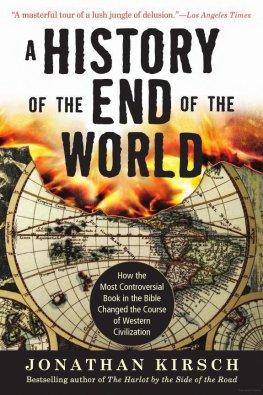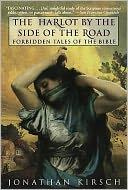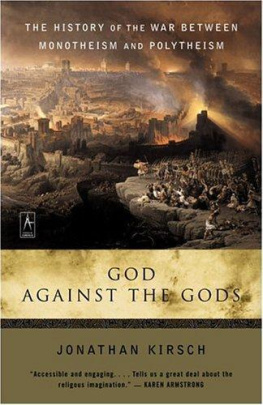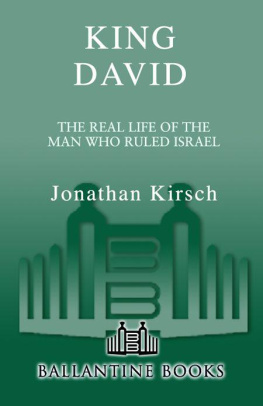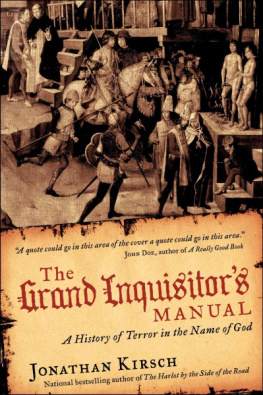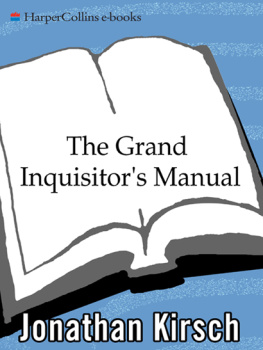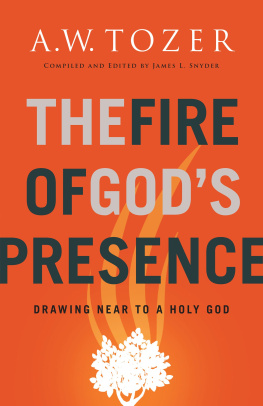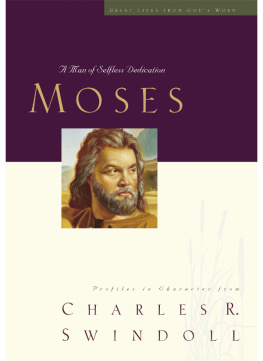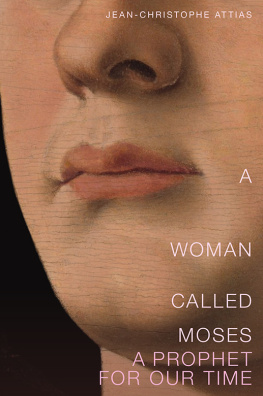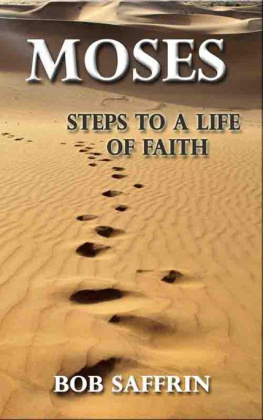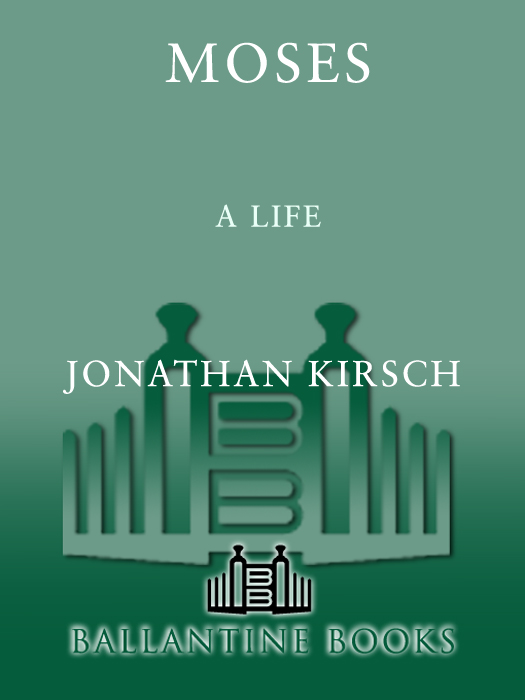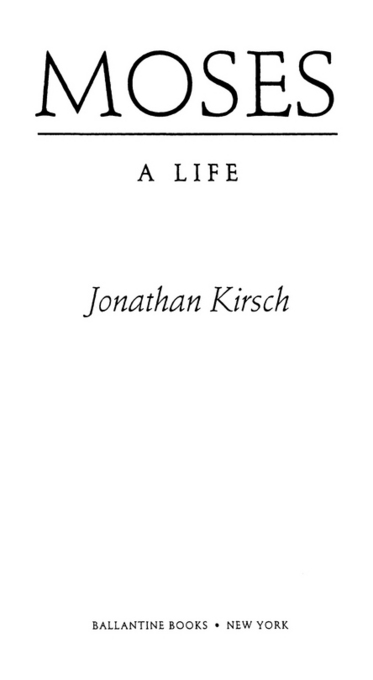[A] PROBING STUDY
Unlike the familiar, granite image of Moses, Kirsch sees a man torn by fits of violence, prone to arguing with God, marked by physical handicaps, reluctant to be a savior.
Los Angeles Times
Kirschs book is strengthened by both a close reading of the Torah and his intimate knowledge of rabbinic folklore that grew up around the biblical tale, to help fill in the famous silences in the Bible.
Houston Chronicle
In Moses, Kirsch paints a fascinating picture of the biblical Moses as a complex man subject to mood swings ranging from compassion to rage, from piety to pomposity.
The Denver Post
Even the most learned will find previously unfamiliar material explained in a clear, intelligent and accessible fashion. There is a tremendous amount of fascinating material for anyone interested in Moses and his family as well as some wonderful insights.
Jewish Journal
A RAFT OF INTERESTING CONJECTURES
AND FACTS FILL THESE PAGES.
The Christian Science Monitor
A serious, sometimes brutal anatomy of Moses Kirsch doesnt gloss over the rough stuff. Among the best of the new crop of historical search writers.
San Diego Union-Tribune
Books treating religious themes and written for a popular audience seem to abound today. Many of these writers, though not biblical scholars, are rigorous in their historical reconstruction and provide readers biblical information that is quite enlightening. This is such a book. [It] brings Moses to life and makes scholarship available to a popular audience.
The Bible Today
[Kirsch expresses himself with] zeal and showmanship skill and sensitivity. Kirsch is very good at providing the cultural and social background necessary for a close reading of all the tales told of Moses but hes at his very best in showing how the text of the Bible holds together, in one compelling portrait, the many images of Moses that compete for the readers attention as his life unfolds from birth to death. Kirsch leaves nothing out of his account, and doesnt gloss over any of the passages. He distills valuable insights into the biblical Moses out of sources as varied as the early rabbis through Baruch Spinoza in the seventeenth century to Sigmund Freud and Martin Buber in the twentieth.
Toronto Globe & Mail
From the bestselling author of The Harlot by the Side of the Road comes an even more controversial conversation on the topic of Moses. Kirsch brings an intelligent perspective to the Bible as both a work of literature and a sacred text. As fresh and exposing as the unmasked face of Moses himself.
The Jewish Transcript
[Kirsch] reveals a Moses that will forever banish Charlton Hestons portrayal from the popular consciousness (and not a moment too soon). Kirschs scholarship and storytelling skill introduce us to a much more interesting and compelling figure than wed known before.
Yoga Journal
A Ballantine Book
Published by The Random House Ballantine Publishing Group
Copyright 1998 by Jonathan Kirsch
All rights reserved under International and
Pan-American Copyright Conventions. Published in the
United States by The Random House Ballantine Publishing Group,
a division of Random House, Inc., New York, and simultaneously
in Canada by Random House of Canada Limited, Toronto.
Grateful acknowledgment is made to Random House, Inc.,
and Faber and Faber Limited for permission to reprint an excerpt from
In Memory of Sigmund Freud from W.H. Auden: Collected Poems by
W.H. Auden, edited by Edward Mendelson. Copyright 1940
and renewed 1968 by W.H. Auden. Reprinted by permission of
Random House, Inc., and Faber and Faber Limited.
Ballantine and colophon are registered trademarks of Random House, Inc.
www.ballantinebooks.com
Library of Congress Catalog Card Number: 9990419
Maps by Mapping Specialists, Ltd.
eISBN: 978-0-307-56792-5
v3.1
I have set before thee life and death, the blessing and the curse; therefore choose life, that thou mayest live.
M OSES
D EUTERONOMY 30:19
Four hundred years of bondage in Egypt, rendered as metaphoric memory, can be spoken in a moment; in a single sentence. What this sentence is, we know; we have built every idea of moral civilization on it. It is a sentence that conceivably sums up at the start every revelation that came afterward: The stranger that sojourneth with you shall be unto you as the home-born among you, and you shall love him as yourself; because you were strangers in the land of Egypt.
C YNTHIA O ZICK
M EMORY & M ETAPHOR
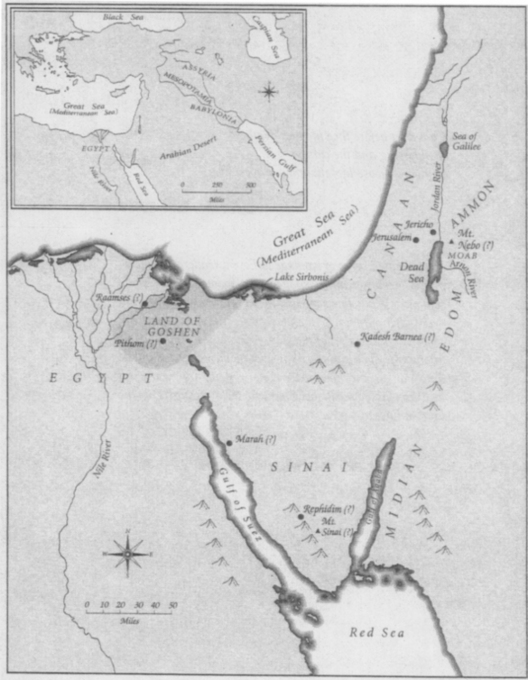
Contents
Chapter One
THE MOSES NO ONE KNOWS
God answered, While the light of truth is not in thee Thou hast no power to behold the mystery.
Then Moses prayed, O God, give me that light.
J AMI , D IVINE J USTICE
T he Bible is remarkably blunt and plainspoken in telling the life story of Moses. Unlike the sacred writings and court histories of other figures from distant antiquity, which tend to dress up their heroes as saints, kings, and even gods, the Bible portrays Moses with brutal honesty and flesh-and-blood realism. Indeed, the essential impression of Moses that we are given in the Bibleand the real genius of his depiction at the hands of the biblical authorsis that he was born like every other infant, grew to manhood with all the impulses and excesses of which real men and women are capable, lived a life marked with passions that are perfectly human, and came to a tragic end that is no less riddled with ambiguity and contradiction than any other human life.
There is nothing divine about Moses, observes the eminent Bible scholar Gerhard von Rad, and, as if to remind us of this crucial fact, the Bible refers to him with a simple, sturdy, and straightforward phrasethe man Moses. (Exod. 32:1, 23; Num. 12:3)
Yet much of what we think we know about Moses is simply made up, and much of what the Bible does say about him is left out of both sacred and secular art. When they conjured up the visions of Moses that are so deeply familiar to us today, Renaissance artists and Hollywood moguls alike felt at liberty to make him over into a shimmering iconthe ultimate irony for the first iconoclast in recorded history. Even the learned theological commentaries and richly decorated sermons of the clergy tend to leave out the more scandalous incidents of his troubled and tumultuous life. Ironically, some of the most intriguing details to be found in the biblical account of Moses never find their way into art and literature, sermons and Sunday school lessons, and what is invented is often much less interesting than what has been left out. So we are left to wonder: Who, after all, is the real Moses?
As we shall discover in the pages that follow, Moses is the most haunted and haunting figure in all of the Bible. To be sure, he is often portrayed as strong, sure, and heroic, but he is also timid and tortured with self-doubt at key moments in his life. He is a shepherd, mild and meek, but he is also a ruthless warrior who is capable of blood-shaking acts of violence, a gentle teacher who is also a magician and a wonderworker, a lawgiver whose code of justice is merciful except when it comes to purging and punishing those who disagree with him, an emancipator who rules his people with unforgiving authority. Whatever he may have looked likeand the Bible never really tells usthe fact is that he hid a disfigured face behind a veil for the last forty years of his long life. He is Gods one and only friend, and yet he is doomed to a tragic death by God himself.


